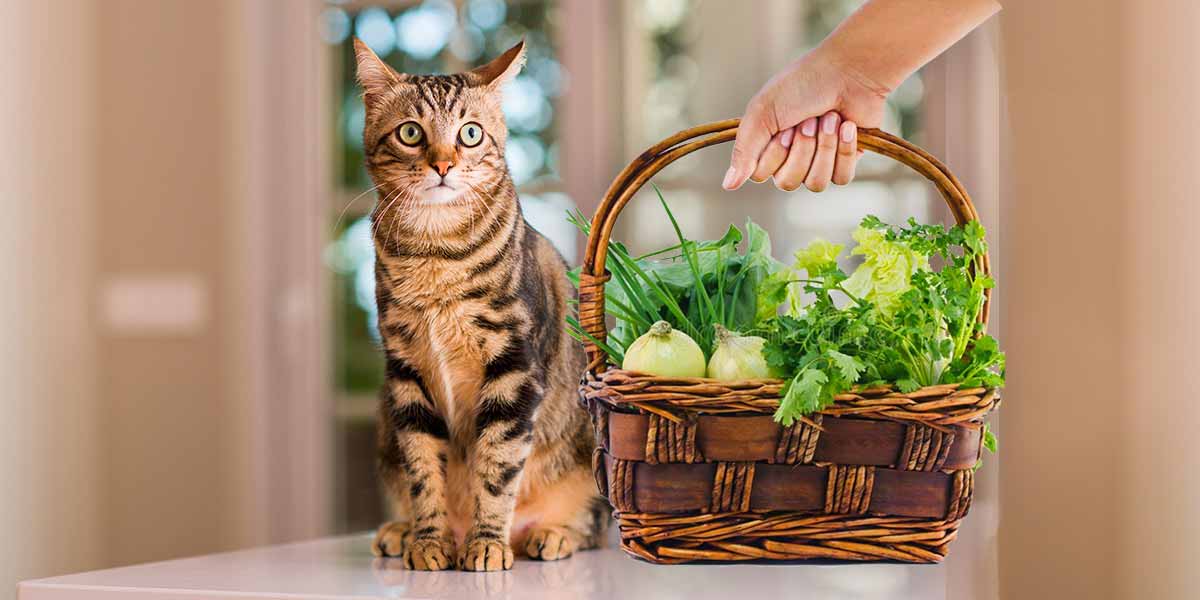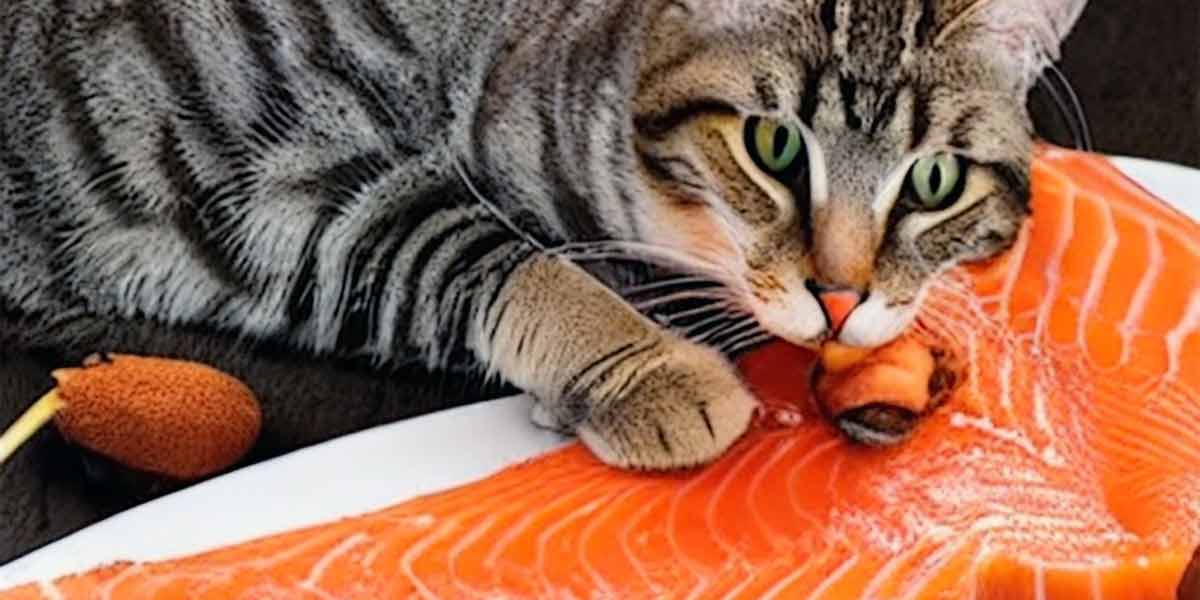I’ve always wondered: Can I feed my cat vegetables? My sister had to travel from time to time and left her cat to me for a while to take care of her. My sister’s cat, Simba, loves to eat, and I often found myself in the dilemma of providing her with a balanced diet while also satisfying his cravings.
As an affiliate, we earn from qualifying purchases. We get commissions for purchases made through links in this website’s posts from Amazon and other third parties.
For a long time, I’ve been trying to figure out the best way to feed her cat vegetables. I just wanted to ensure he gets the nutrients he needs. But I had no idea how much he would enjoy it, or how to make it a part of his diet. After researching, I’ve learned some interesting facts about how to feed cats vegetables. So, now I’m excited to share my findings with you.
The truth is, cats can actually benefit from a balanced diet that includes vegetables. Vegetables provide vital nutrients that cats need for a healthy lifestyle. By knowing that you can give them a variety of different vegetables, they don’t get bored with the same food. With the right preparation and presentation, cats can actually enjoy their vegetables just as much as they do their regular food.
I’m excited to share my journey of discovering the best way to feed cats vegetables and the benefits of doing so. Choose the right vegetables and do the best preparation methods and presentation techniques. I’m here to share the things I’ve learned.
Are you looking for a way to give your cat a nutritious diet with some variety? Read on to find out how you can feed your cat vegetables.
Types, nutritional benefits, and feeding guidelines
As a cat lover, I’m always looking for ways to keep my sister’s cat healthy and happy. One of the household debates we have is whether or not cats should eat vegetables. Her cat loves his wet and dry cat food! But I was curious if there was something else I could do to give the cat more nutritional benefits. That’s when I started researching vegetables suitable for cats.
I was surprised to learn there are a variety of vegetables that cats can ingest safely. Some of the most common vegetables include carrots, cucumbers, celery, and spinach. These vegetables contain essential vitamins and minerals. On the other hand, they should be served as an occasional treat and not as a main source of nutrition.
Feeding vegetables to cats? It’s important to make sure they are cooked or chopped into small pieces to avoid any choking hazards. I find it’s easier to mash the vegetables into smaller pieces and mix them in with my cat’s wet food. I also take care to avoid adding any seasonings or sauces as cats are sensitive to certain flavors.
I’ve found that incorporating vegetables into a cat’s diet has been a positive experience for us all. He loves tasting new flavors and I’m confident he’s getting all the vitamins and minerals he needs. Plus, it’s a great way to bond and show my sister’s cat how much I care.
So if you’re considering adding vegetables to your cat’s diet, make sure you do your research first. When done correctly and in moderation, feeding your cat vegetables can be an incredibly rewarding experience.
How to introduce vegetables into your cat’s diet: Gradual transition and introducing with variety
I know that many of you have cats who are picky eaters, and it can be difficult to get them to try new foods, vegetables included. However, when it comes to your cat’s health, it’s important to feed them a balanced diet.
Introducing vegetables into their diet is one way to add variety and essential vitamins and minerals to their diet. The key to introducing vegetables into your cat’s diet is to do it gradually and to introduce variety.
When it comes to feeding your cat vegetables, start with small amounts, adding just a teaspoon of cooked vegetables to their regular meal. Make sure the vegetables are cooked thoroughly, as raw vegetables may be difficult for cats to digest. As your cat becomes more accustomed to the new foods, you can gradually increase the portion size. Pick a type of vegetable, like cooked carrots, and stick with it until your cat has accepted it, then start introducing other vegetables.
When introducing variety, it’s important to pick vegetables that are safe for cats to eat, like cooked carrots, cooked peas, cooked sweet potatoes, cooked green beans, kale, and cooked broccoli. Keep in mind that cats are obligate carnivores, so they won’t eat a lot of vegetables. It’s also a good idea to look into adding supplements to their diet, as they may not get all the vitamins and minerals they need from their food.
Overall, introducing vegetables into your cat’s diet is an important step to ensure that they get all the nutrients they need. Start by introducing small amounts of cooked vegetables and gradually increase the portion size. Additionally, introduce variety by trying different vegetables that are safe for cats to eat. Supplements may be necessary to make sure your cat gets the proper nutrients.

Common vegetables preferred by cats: Taste preferences, texture, and health benefits
It all started one day when I was trying to feed my sister’s cat Simba some new vegetables. I had heard that cats can be picky eaters and I wanted to make sure I was providing the healthiest and most delicious options. After some research, I learned that there are some common veggies that cats prefer more than others. Not only has their taste preference been proven, but the texture of the vegetables and the health benefits they provide are also factors.
The vegetable cats prefer to tend is the one that is crunchy, such as carrots, celery, and cucumbers. Their strong sense of smell helps them tell if the vegetables are fresh and, given the right texture, cats enjoy the crunchy vegetables. In addition to the texture, vegetables like carrots and sweet potatoes contain important vitamins and minerals like Beta-Carotene, Vitamin-A, and Vitamin-C which are essential for cats’ health.
One of the key elements to remember when feeding cats vegetables is to give them in moderation.
Too much of anything can be bad for them, so it’s important to keep track of the number of vegetables being given. Additionally, it’s important to cut the vegetables into small pieces – by doing this, you can also ensure that they’re fresh and healthy.
Feeding your cat vegetables doesn’t have to be a daunting task. There are plenty of common vegetables that cats prefer and enjoy. By understanding their taste preferences, texture, and health benefits, you can make sure your cat is getting all the nutrition they need. All that’s left for you to do is give them a try. Start small, see how your cat responds, and then adjust the quantity and type of vegetables accordingly.
Preparing vegetables for your cat: Preparation, storage, and serving techniques
I recently decided to start feeding our cat vegetables in addition to her regular diet. It’s always better to give her the same kinds of nutrients that she would get from foraging in the wild, like vitamins, minerals, and fiber. I was a bit hesitant at first because I had no experience preparing vegetables for cats. After doing some research, I learned that it’s easier than I thought.
Find the best kind of vegetable for your cat
My first option was to decide what kind of vegetable I wanted to feed her. I opted for something simple like carrots, celery, and sweet potatoes since those are all safe for cats to eat. I then got to work preparing them.
Wash the vegetables thoroughly
To do this safely, I washed the vegetables thoroughly to get rid of any dirt or contaminants. I also cut off any tough parts, like the stems and leaves, since those can be difficult for cats to digest.
Store the vegetables well
Once the vegetables were prepared, I had to figure out how to store them. The best way is to put them in an airtight container and store them in the refrigerator. This will help preserve their nutrients and keep them from spoiling. It’s also important to not leave the vegetables out for more than a few hours at a time, as this can cause them to lose their nutritional value.
Cut them into small pieces
Finally, it’s time to serve the vegetables to the cat. It was easy to cut them into small pieces so she can easily chew and swallow them. I also sprinkle a bit of catnip on top to entice her to eat them. I always put the vegetables in a bowl for her to eat and remove any that she doesn’t finish right away so they don’t spoil.
By following these steps, I was able to successfully feed our cat vegetables. It’s important to remember to be careful when preparing and storing the vegetables, so they don’t lose their nutritional value.

Risks of feeding vegetables to cats: Potential health concerns and allergies
It’s important to understand the potential risks that come with feeding your cat vegetables.
Vegetables can be a great source of vitamins and minerals, but they can also be a source of potential health issues and allergies. Before feeding your cat vegetables, it is important to understand the potential health concerns and how to minimize them.
Choose types of vegetables that are safe for cats
First, it is important to know what types of vegetables are safe for cats to eat. While cats can eat some vegetables, such as spinach, broccoli, and carrots, others, like onions and garlic, are toxic and should be avoided. You should also avoid vegetables that are high in oxalates, such as rhubarb, which can cause bladder stones in cats. Additionally, some vegetables can cause digestive issues if your cat isn’t used to them, so it is important to introduce them gradually.
Health concerns and allergies
It is also important to understand the potential health concerns and allergies of feeding your cat vegetables. In some cases, cats can be allergic to certain vegetables, which can cause vomiting, diarrhea, and other digestive issues. Additionally, some vegetables contain compounds that can be toxic to cats, such as those found in tomatoes and potatoes. If you suspect that your cat is allergic to a certain vegetable, you should stop feeding it and contact your veterinarian immediately.
Make sure the vegetables have no toxic chemicals
Finally, it is important to make sure that the vegetables you are feeding your cat are not contaminated with any pesticides, herbicides, or other chemicals. These can be toxic to cats and can cause a range of health problems, including skin irritation, breathing difficulties, and even organ damage. Additionally, it is important to make sure that the vegetables are cooked properly to reduce the risk of foodborne illnesses.
Feeding your cat vegetables can be a great way to provide them with the vitamins and minerals they need, but it is important to understand the potential risks and allergies. By understanding the potential health concerns and taking steps to minimize them, you can ensure that you are providing your cat with the best nutrition possible.
Can I feed my cat vegetables? The benefits, improved digestion, weight management, and overall health
When it comes to keeping our cats healthy, a diet rich in vegetables can make all the difference. Feeding your cat vegetables can improve their digestion, help them maintain a healthy weight, and provide a wealth of other health benefits.
As an owner, it’s important to understand the various ways vegetables can improve your cat’s health. Vegetables provide a great source of fiber, which helps with digestion by adding bulk and moisture to your cat’s diet. This fiber can help keep your cat’s digestive system running smoothly and prevent constipation. Additionally, adding vegetables to your cat’s diet can help regulate its appetite and help them maintain a healthy weight.
Vegetables are also rich in essential vitamins and minerals that can help keep your cat healthy. Vitamin A, for example, is important for eye health and can help boost the immune system. Vitamin C helps your cat fight off infection and helps the body absorb iron. And the essential fatty acids found in some vegetables can help keep your cat’s skin and coat healthy.
Watch the next video to find out what the Veterinarian says about feeding your cat a vegan diet:
When it comes to feeding your cat vegetables, there are a few important tips to keep in mind. Start by adding small amounts of vegetables to their diet and gradually increase the amount over time. Make sure to cook any vegetables you’re giving your cat and avoid adding any salt, sugar, or seasonings. Lastly, talk to your veterinarian about the best types of vegetables for your cat’s age and lifestyle.
Feeding your cat vegetables can have a huge impact on their health and well-being. From improving digestion and weight management to providing essential vitamins and minerals, adding vegetables to your cat’s diet can help keep them happy and healthy for years to come.
FAQs about feeding your cat vegetables: Common questions and answers
Cats are carnivorous animals and don’t usually show much interest in plant-based foods. However, some vegetables can be beneficial to your cat’s health, and it’s important to know what vegetables are safe to feed them and in what quantities. This blog post will answer some of the most frequently asked questions about feeding your cat vegetables.
Can I feed my cat vegetables?
The answer is: Yes, cats can eat vegetables. While many cats won’t show much interest in plant-based foods, some vegetables are safe for cats and can even offer some health benefits. Some vegetables that are safe for cats to eat include carrots, cucumbers, peas, spinach, and sweet potatoes.
How many vegetables should I feed my cat?
When introducing vegetables into your cat’s diet, start by offering very small amounts. It is also important to monitor their reaction to make sure they are not having any digestive issues. Once your cat has had a chance to adjust to the new food, you can gradually increase the amount. It is best to keep the servings small and limit vegetables to 10% of their daily caloric intake.
What benefits do vegetables provide for cats?
Vegetables can provide several health benefits for cats, including improved digestion, more balanced nutrition, and added vitamins and minerals. Carrots, for example, are a good source of dietary fiber and vitamin A, while cucumbers are a good source of hydration and vitamin K.
Can I feed my cat raw vegetables?
It is not recommended to feed your cat raw vegetables due to the risk of foodborne illnesses. It is best to cook or steam vegetables before offering them to your cat.
Are there any vegetables that cats should avoid?
Yes, there are some vegetables that cats should avoid. These include onions, garlic, and mushrooms, as they can be toxic to cats.
Feeding your cat vegetables can be a great way to add variety to their diet. In that way, you provide them with some essential nutrients. Just remember to start slow and offer only small servings. If you have any questions or concerns, be sure to consult with your veterinarian.
Conclusion
The answer to your question “Can I feed my cat vegetables?” is: Yes, vegetables can be a great addition to a cat’s diet, providing essential nutrients and vitamins, but only when they are cooked well. I was so excited to share this knowledge with my cat and began preparing his favorite veggies. He eagerly devoured them and now, he looks forward to his vegetable-filled meals every day.
I feel incredibly satisfied knowing that I was able to provide my cat with the best nutrition possible. Cats can’t eat vegetables as their main source of nutrition. But they can certainly benefit from a balanced, healthy diet that includes vegetables. I’m so glad that I was able to answer this question for my sister, myself, and other cat lovers. Now we can ensure our furry friends are getting the best nutrition.






